This year’s rainy season could hardly have been more different from the last. 2023-24’s rainfall was steady and fullsome, but it did not bring the intense flooding that we have seen in the last 5 rainy seasons. This was perhaps due to a long dry spell in the middle of the rains which allowed the waterlogged soils to dry, and the seasonal rivers to drop, before the next deluge arrived.
Whatever the reasons, the drier conditions tend to favour wildlife sightings, especially in the early part of the season as we enjoy better access and the diminished inland water brings wildlife closer to the more accessible areas. We haven’t had dry year like this since 2018 so I was excited to see what Mike White and I would discover in our week-long trip in the Mfuwe area, based at Track & Trail River Camp.
Here follows an image-based record of the tour. Thank you for reading and I hope you enjoy!
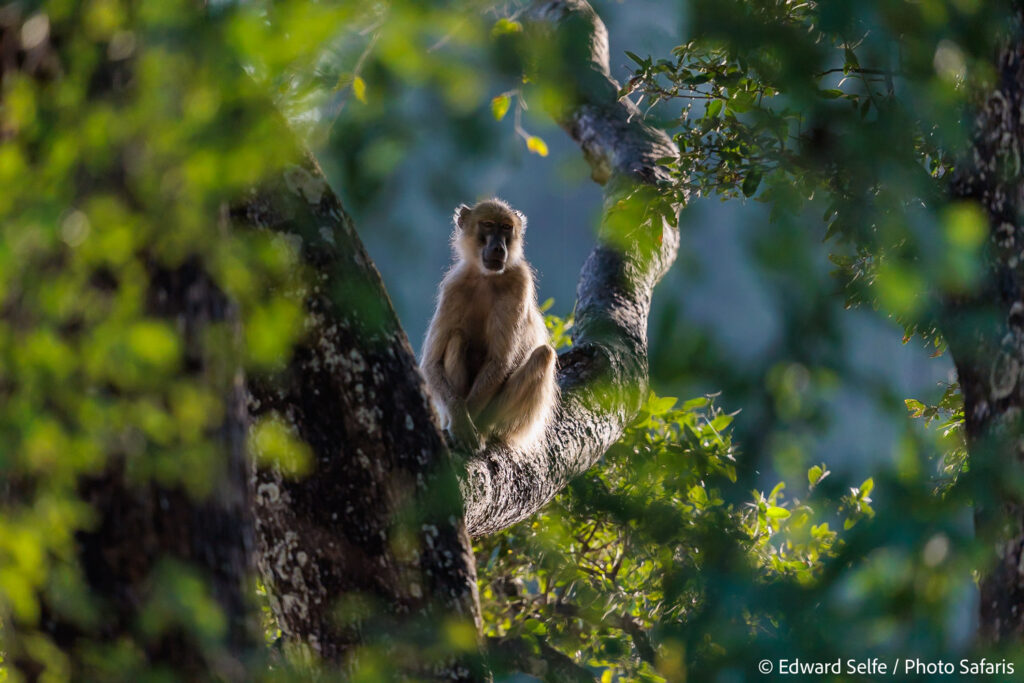
Our first sighting of the morning on day 1 was a female leopard. Baboons told me where she was and, after spending time with her, we returned to the baboons. They were sitting in the lovely morning light and using the vegetation to blur the foreground gives a nice sense of depth.
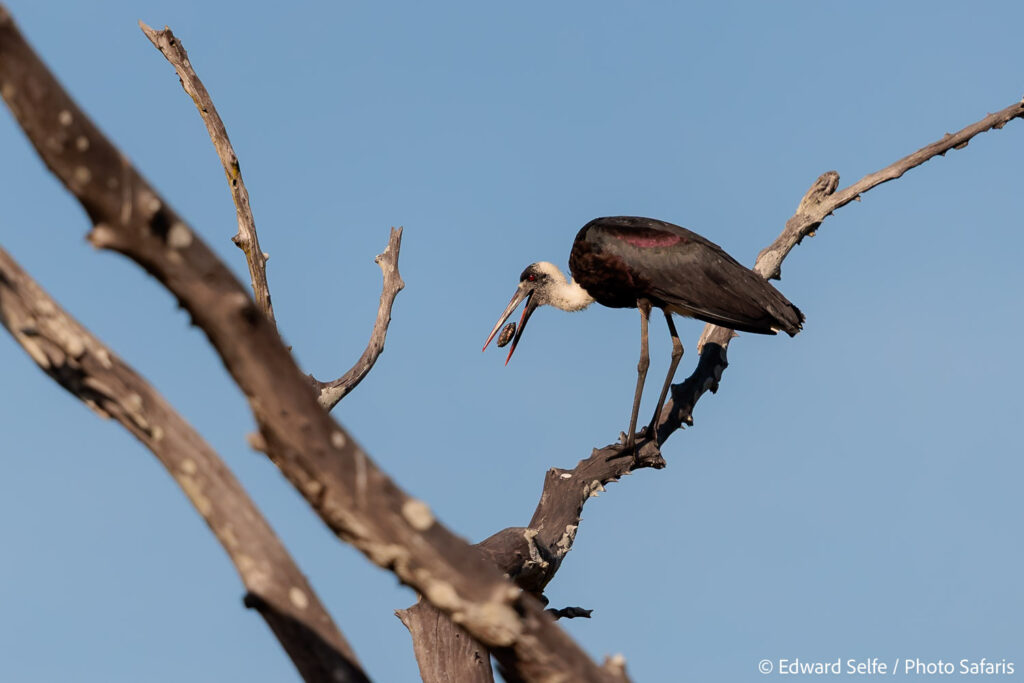
The Emerald Season is a fantastic time for birds, with small ponds all over the park. This woolly-necked stork had caught a terrapin and was trying to work out how to get into it…before finally deciding that the challenge was too great for the potential reward. It dropped the terrapin which splashed back into the water.
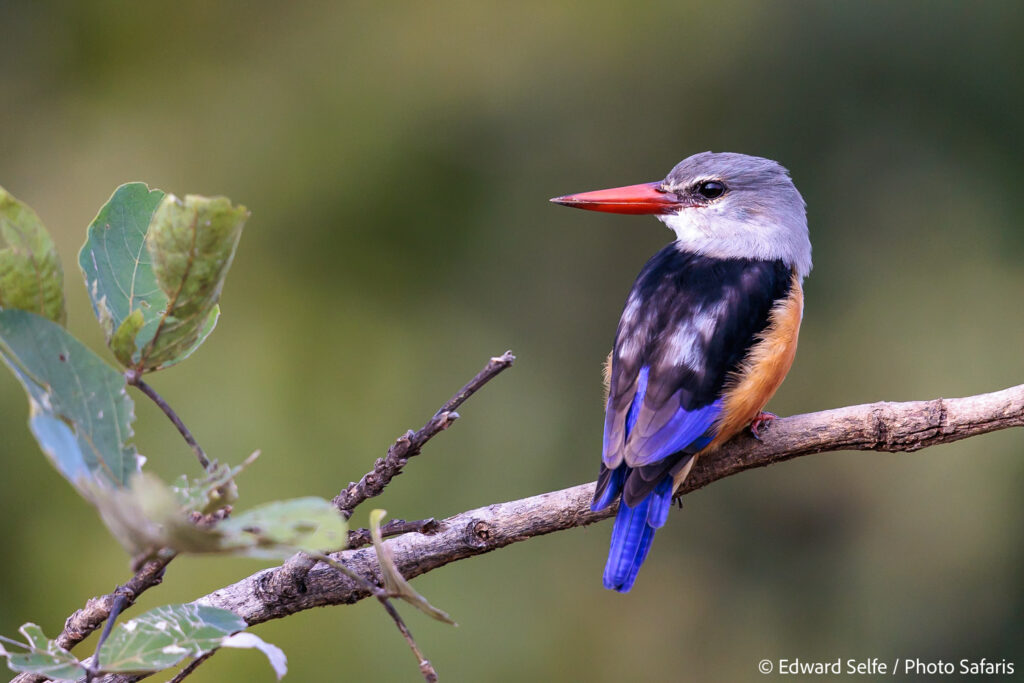
Spectacularly close views of a Grey-headed Kingfisher which was hunting for crickets and large insects in the moist grassland along the edge of a lagoon.
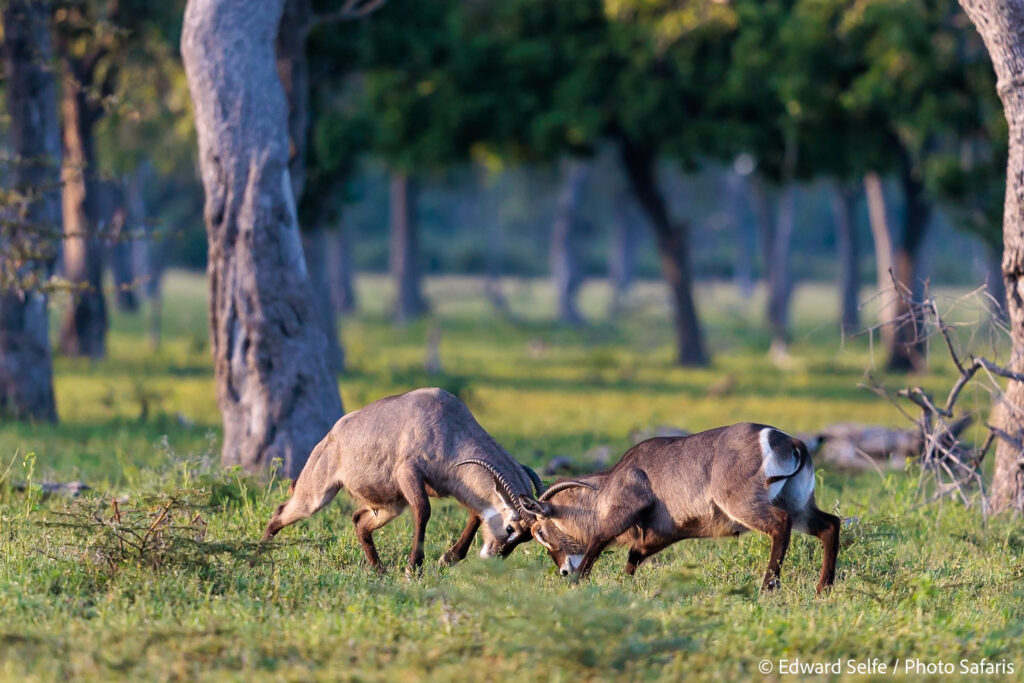
The sightings can be superb in the early part of the year, but more than anything, it is the light which is extraordinary. Later in the morning it becomes harsh with deep shadows, but in the first 2 hours of the day, it’s unparalleled. Two waterbuck bulls were duelling in the forests along the top edge of one of the large lagoons, and we discussed the need to see at least one of the 4 eyes of the two bulls in order to help your viewer engage with the image.
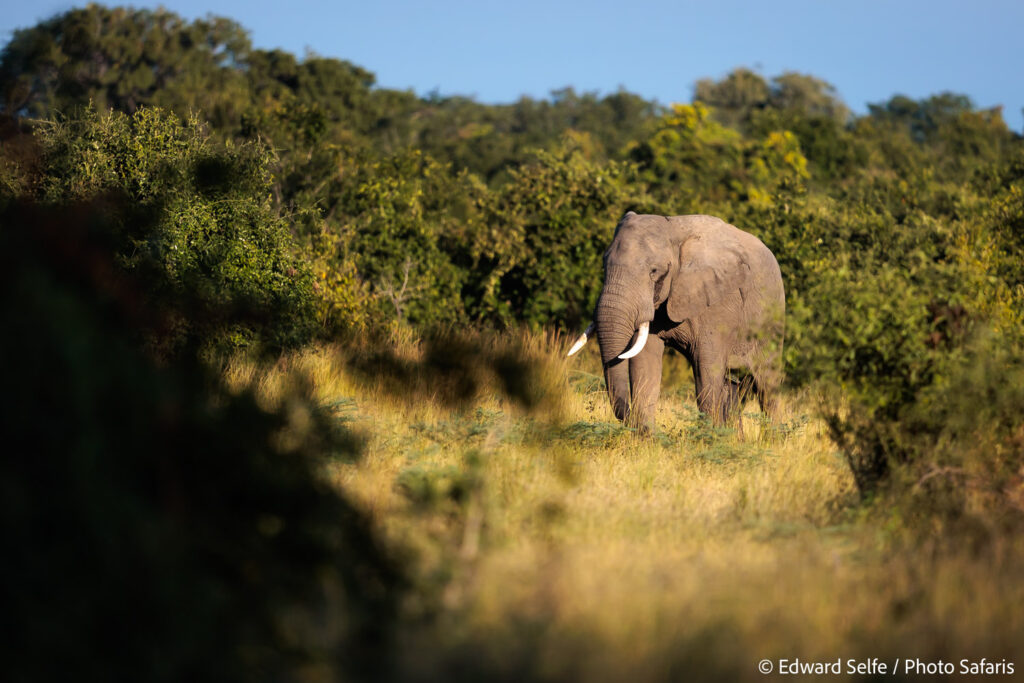
Late in the morning, it’s important to shoot with the light behind the camera to avoid harsh shadows. Intentionally keeping vegetation in the foreground helps to give a sense of depth and avoid the image becoming a simple portrait.
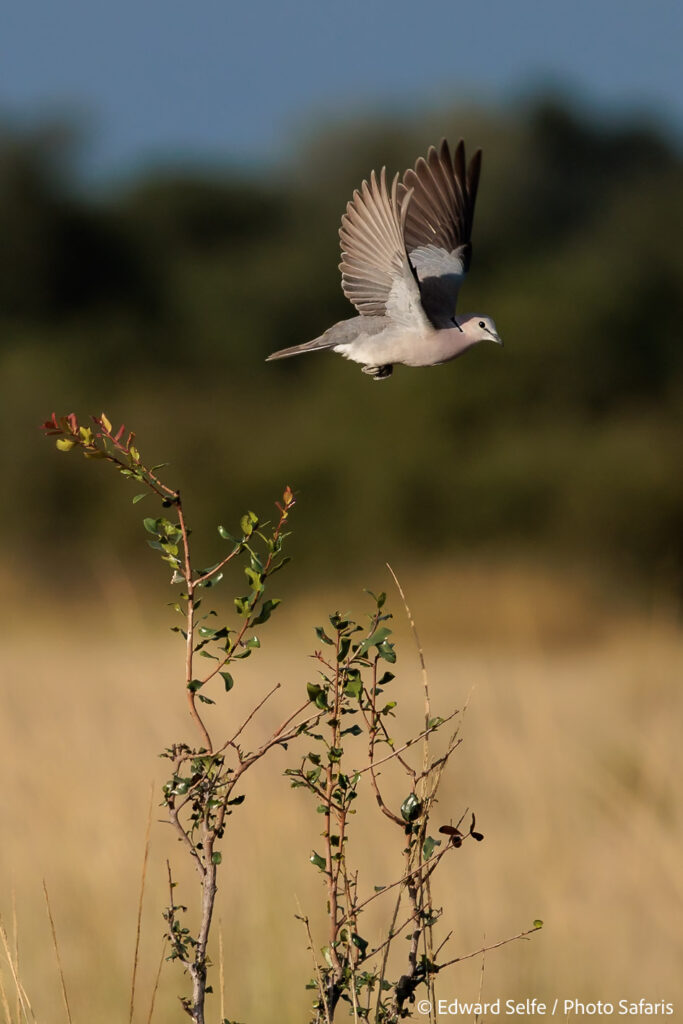
One of Zambia’s most common birds; a ring-necked dove. But when captured in good light, with some action in the frame, it becomes not only a challenge for a photographer but a pleasing result.
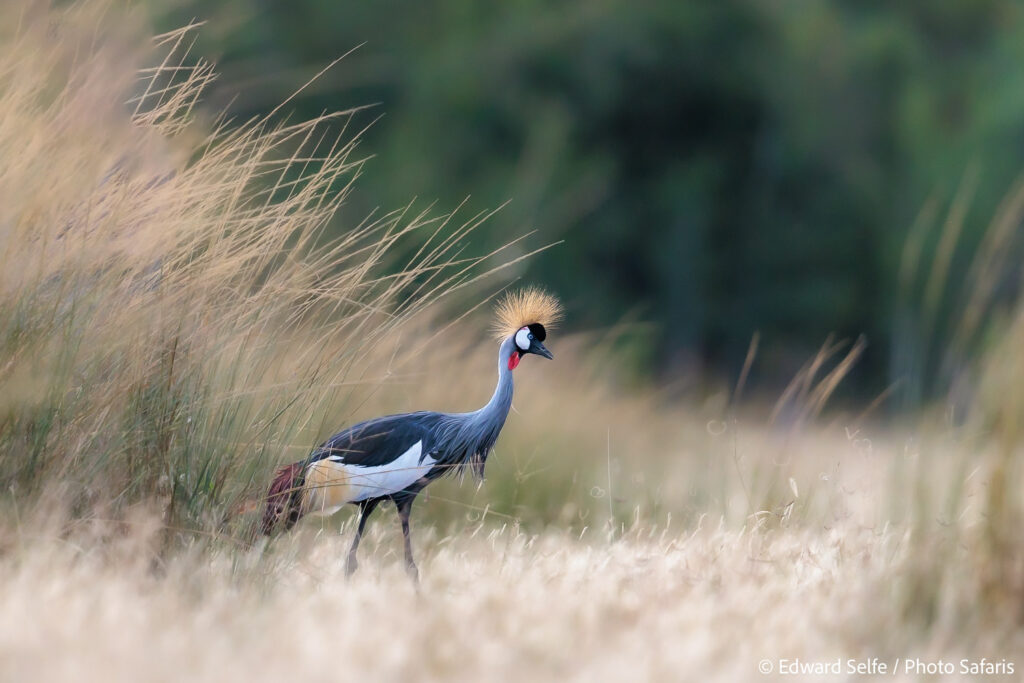
One of my favourite images from the safari; one of a pair of Grey Crowned Cranes with whom we spent almost an hour one evening. They are fiercely shy birds, using any form of cover and devious method to ensure that you rarely get a good view. But moving slowly, taking our time and working towards them in a diagonal route eventually allowed them to relax. The soft grasses, combined with shooting towards the light after sunset, makes the overall image one that I am very pleased to keep.
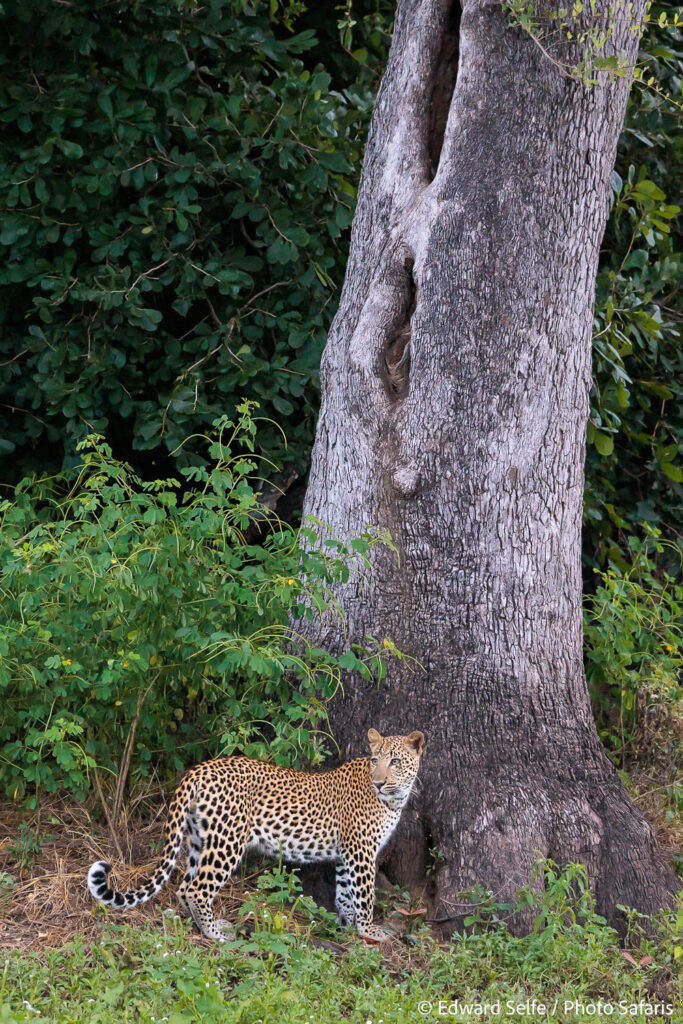
Our second of many leopard sightings on this trip. This young male was out and about early in the morning. He wasn’t shy but was also a little uncertain about being alone without his mother. We subsequently found him in the same area several more times and he slowly settled and became more confident.
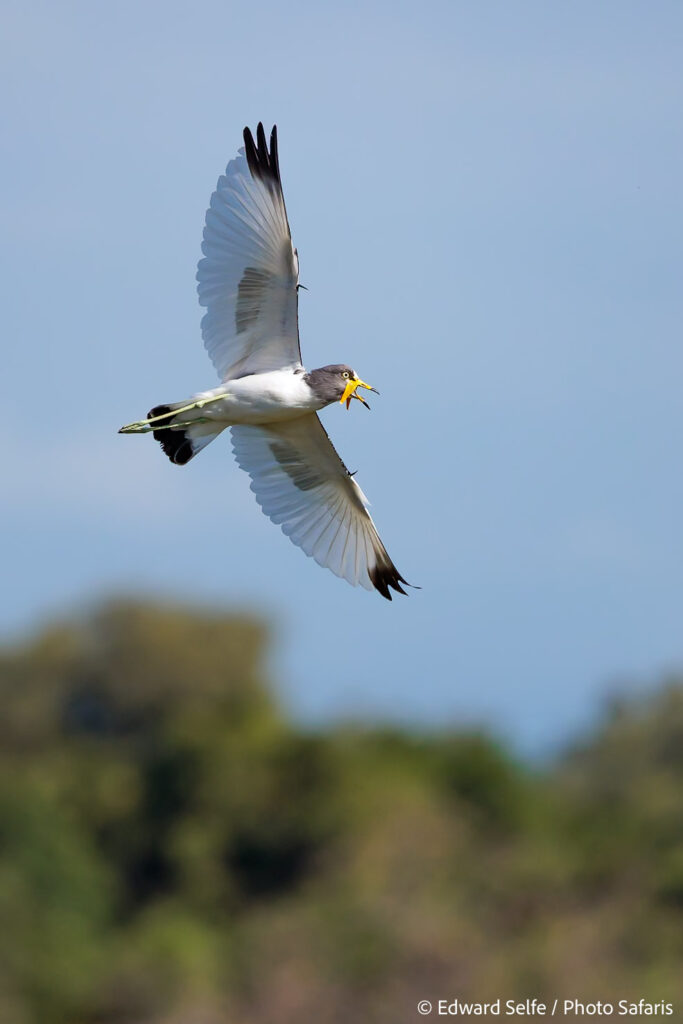
One of the best things about photo safaris is that we can find subjects anywhere. Quiet morning, head to the river and there are always hippos or, in this case, White-crowned Lapwings to enjoy. These birds have fearsome spurs on the points of their “wrists” which are used to subdue an adversary or fight off a threat to their nest site…though more often they will opt for a distraction-based approach, flying low over your head to draw you away from the nest.
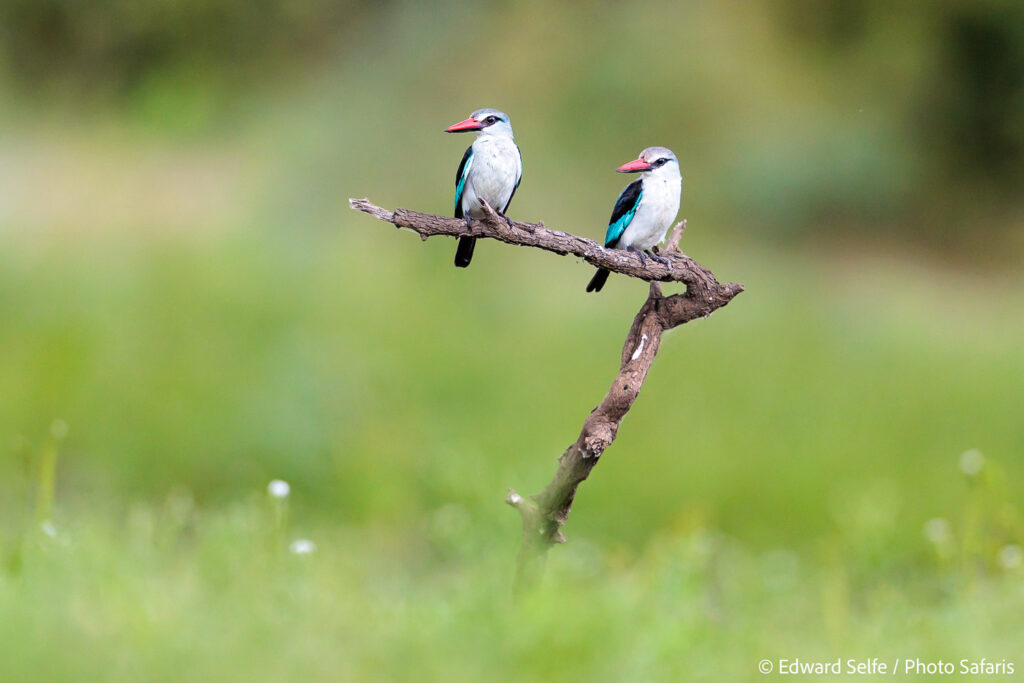
Why the addition of a second bird to a perch makes so much of a difference, I don’t know. But this image of two Woodland Kingfishers on a low perch on an overcast afternoon is 10 times more interesting and appealing than the same image with 1 of the birds. By getting low, we could bring the green background behind the birds and also make the perch appear to float in the sea of greenery.
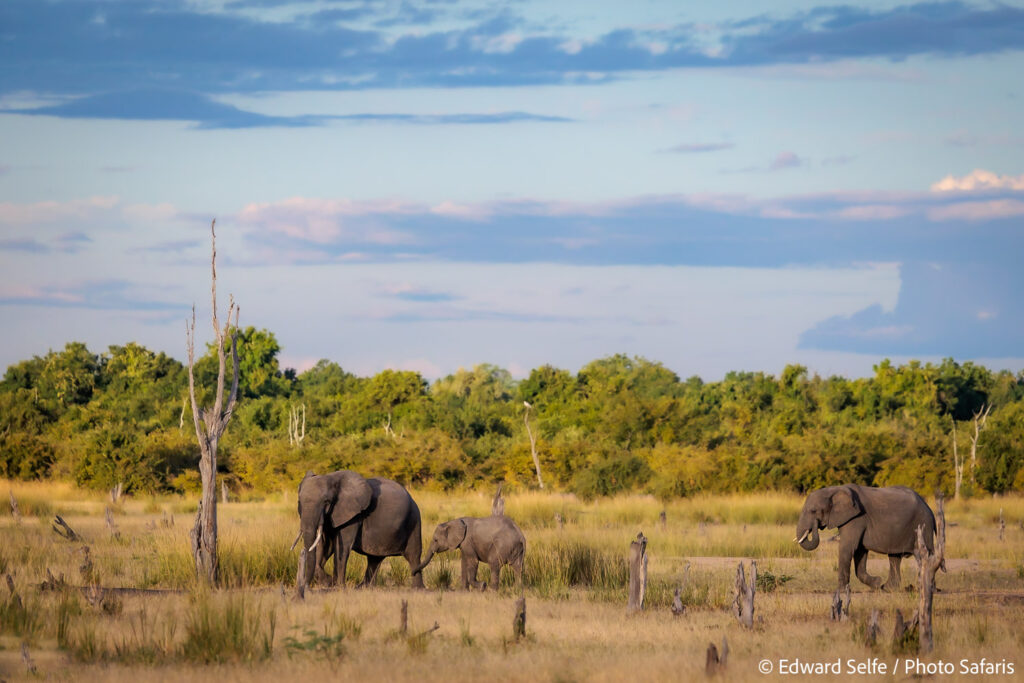
Simple shot of a family of elephants made interesting by the setting and the colours in the sky. Shooting images like this, I tend to “expose to the right” making the image as bright as I can without losing details in the sky. A little editing on the foreground brings the elephants and the dead trees to life.
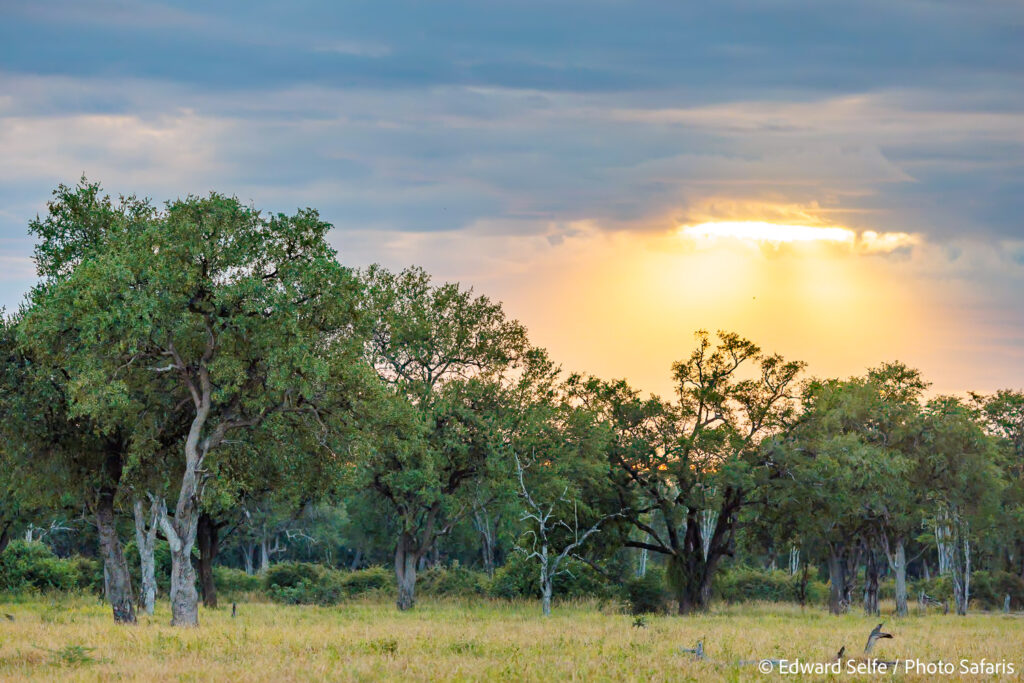
A simple cloud-parting shot showing the memorable colours of Emerald Season.
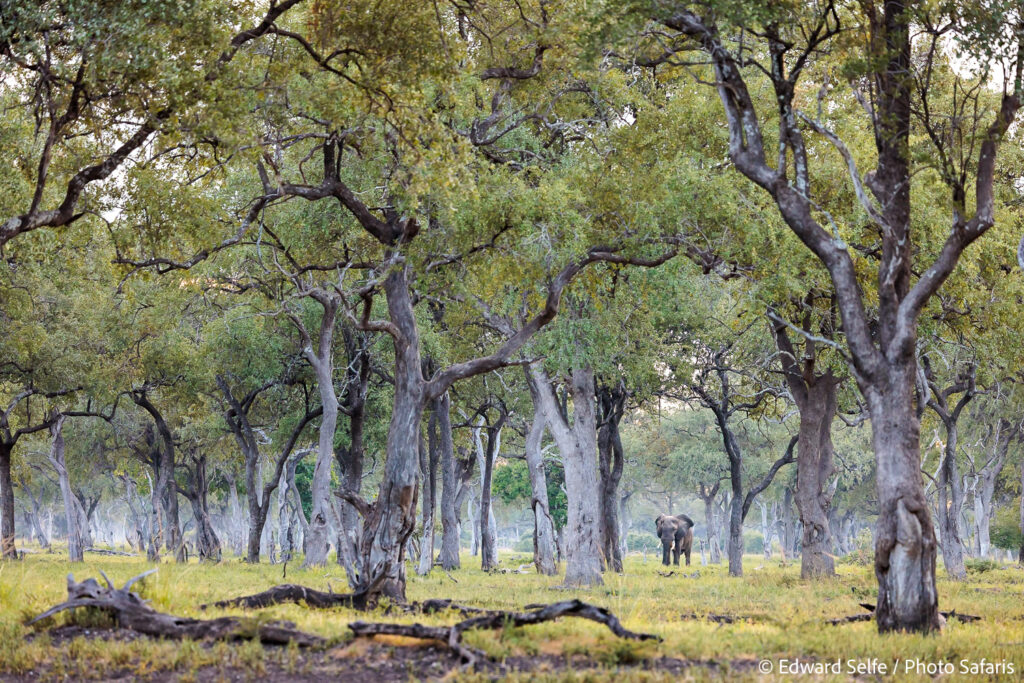
I love to show subjects small in their surroundings, but the skill is to make sure they are still immediately recognisable. The depth of the forest in this image leads the eye towards the elephant and makes sure that he is the focal point, even though he makes up perhaps 3% of the frame.
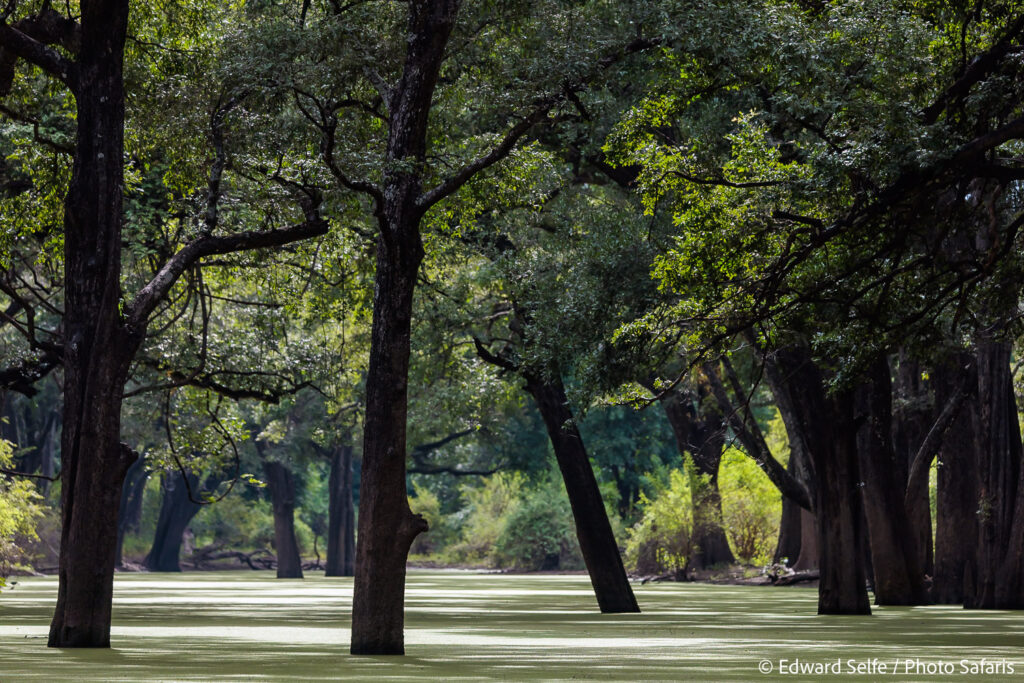
The dry conditions meant that I could access this Ebony Grove while there was still a large amount of water at its base. This was an unexpected bonus that I had never seen before. It’s not clear from the image, but there is 1-2m of water throughout this frame, with green algae giving the water its lawn-like appearance.
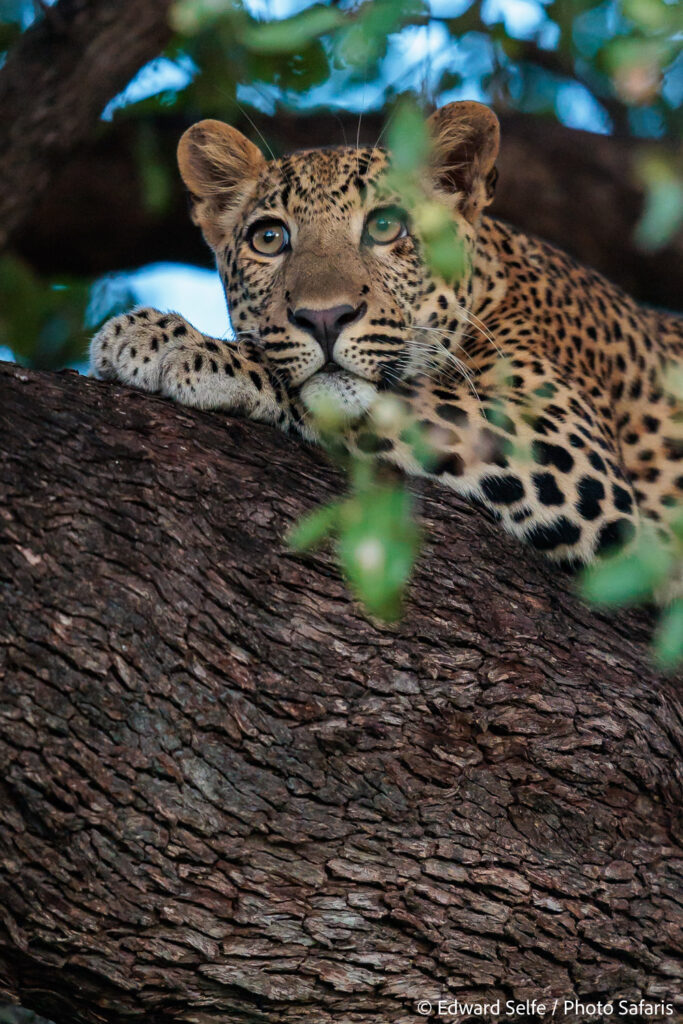
Our final evening, and we were able to spend time with the young male leopard again. This time her was resting in a leadwood tree and the shadows were harsh. Waiting until the sun had set and the light was very soft, we could create stunning images at just 1/50 and 1/30 sec. High ISO and image stabilising technologies allow shots like this which would have been very much harder even 5 years ago.
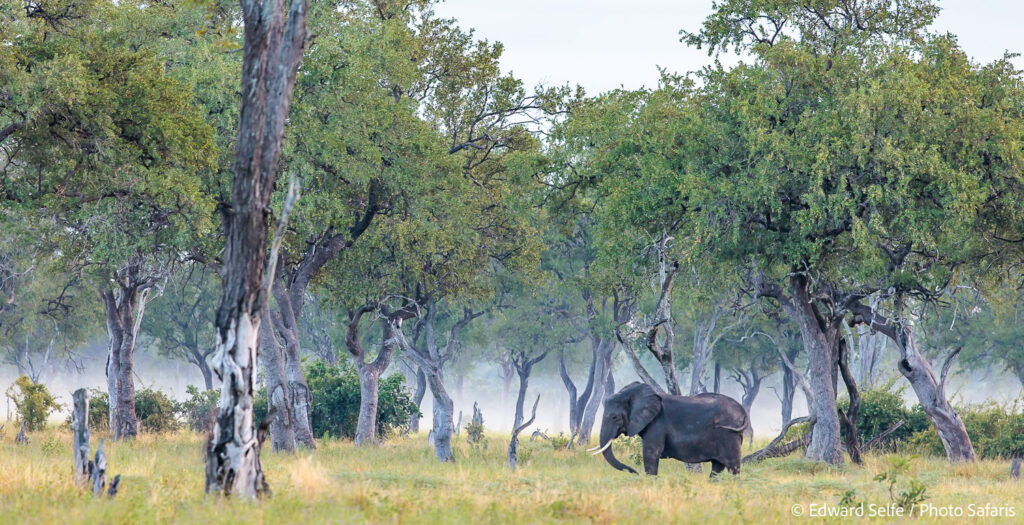
The weather conditions were varied on this trip, ranging from hot, sunny days to cool overcast afternoons. One morning, there was mist lying in the low areas of the open munga forests…and we knew we had to take advantage of this rare event. Driving on, we located another patch of mist and were delighted to find a small herd of elephants crossing towards it. A quick decision about where to position the vehicle and we had a very unusual Luangwa shot!
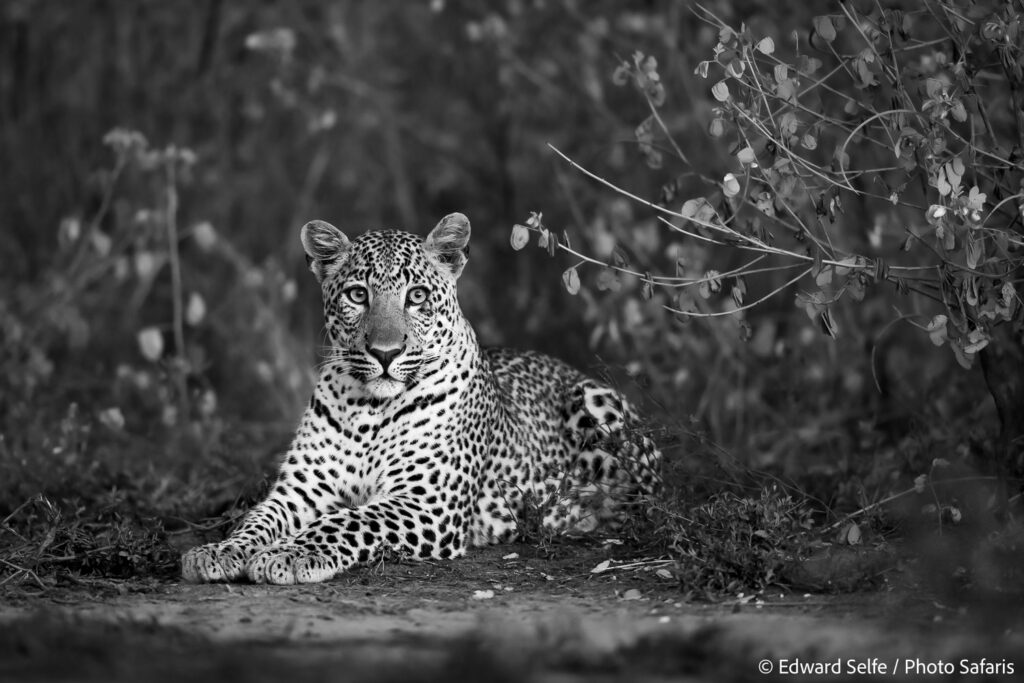
The young male leopard was out and about again very early the next day. This image, converted to black and white for effect, was taken with the camera off the edge of the vehicle to create the low angle of view.
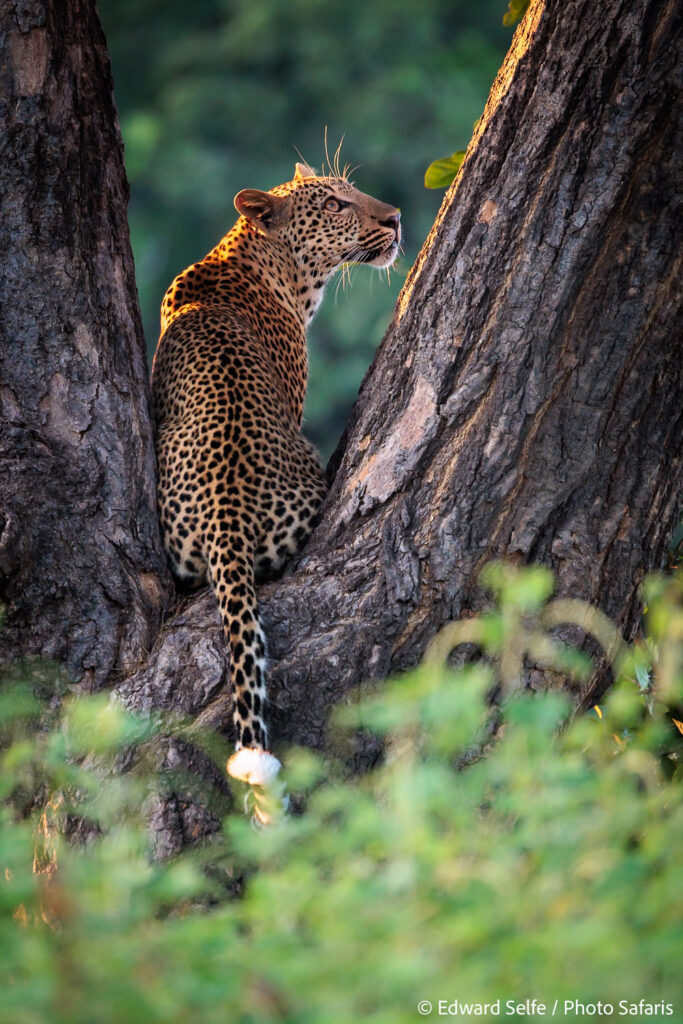
While the light still had an extraordinary golden softness, he leaped into a tree and was momentarily rim-lit, before he turned and dropped to the ground again.
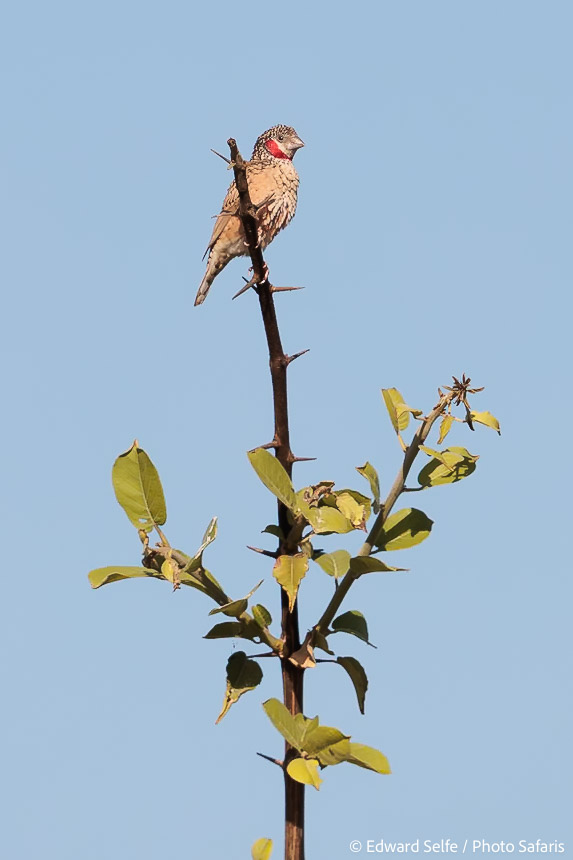
Our last sighting of the trip, a morbidly-named Cut-throat Finch perches on a frond overhanging the road. I used to see very few of these birds, but recent years has brought about an increase. Of course, there is always the chance that I had overlooked them, but that seems unlikely given their very distinctive plumage!
The Emerald Season is a beautiful time of year, and the more time I spend in the bush, the more I value its vibrancy, colours, light and vigour. This season runs – in my mind anyway – from April to mid-June and I am now offering a number of tours in this time frame. Please contact me if you would like to talk more about it.

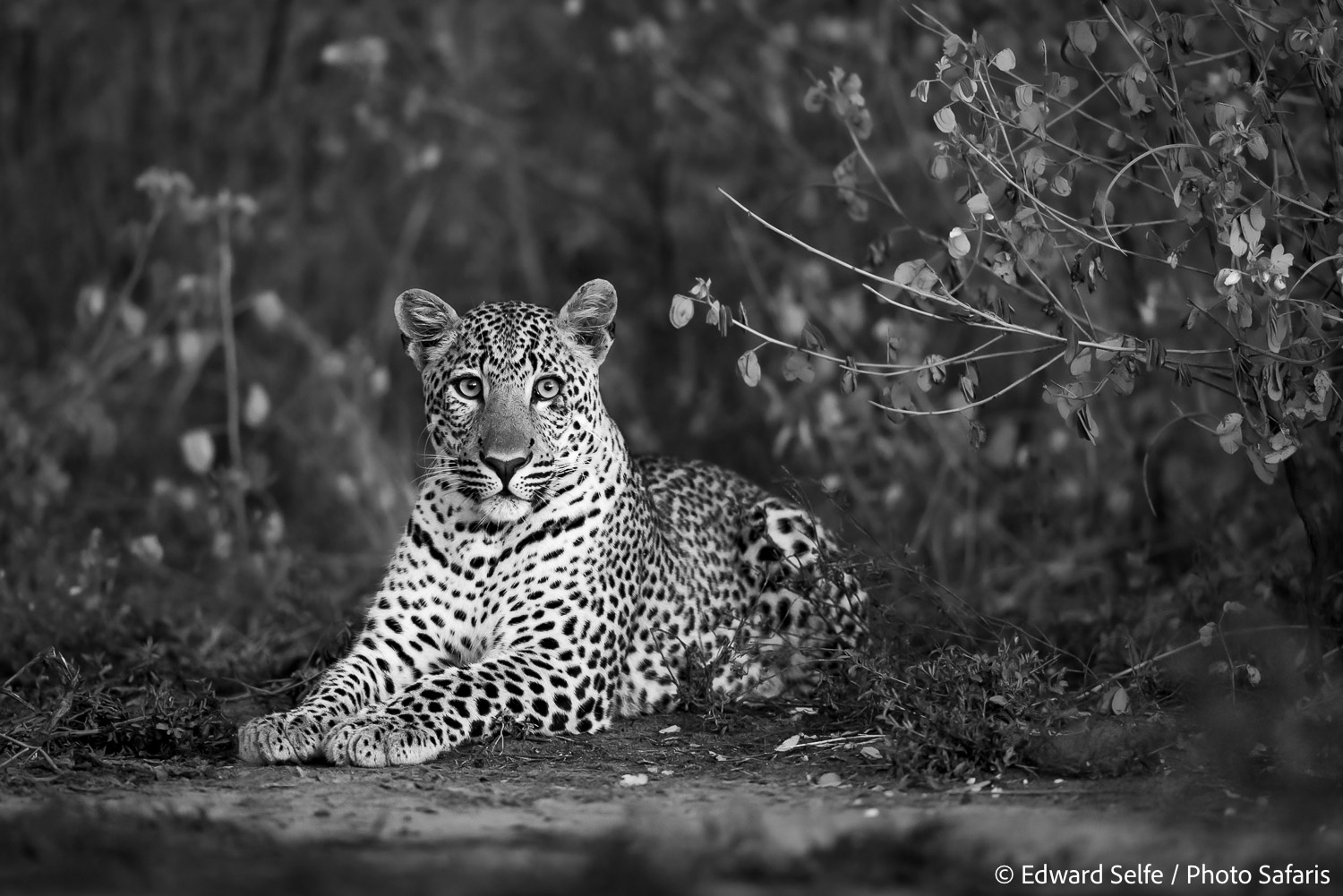



Leave A Comment